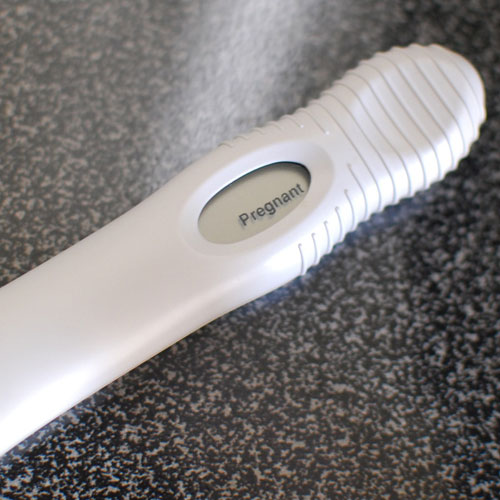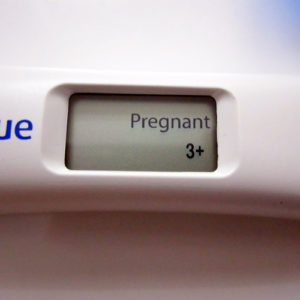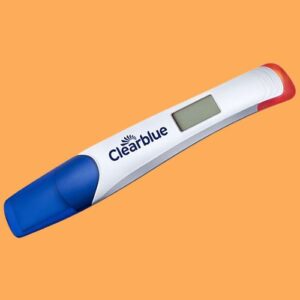Home Pregnancy Tests work on a very basic idea. It’s through the detection of a specific hormone in the woman’s urine called Human Chorionic Gonadotropin (hCG). This is a glycoprotein hormone, which is only secreted by the placenta a short time after the implantation of a fertilised egg in the lining of the uterus. If this hormone is present, it’s a strong indication of pregnancy.
Early Detection Is Dependent on Test Sensitivity
How sensitive a home pregnancy test kit is, determines how long after conception the pregnancy can be detected using it. MilliInternational Units (mIU) that is amounts equal to 1/1000th of an IU per millilitre are used to determine the presence of Human Chorionic Gonadotropin (hCG). So a pregnancy test with a sensitivity of 50-100 mlU/ml is less sensitive than one that can measure as little as 20 mIU/ml. The 20-25 mlU/ml with a higher degree of sensitivity gives the capability of detecting the pregnancy earlier in the process. With the more sensitive pregnancy testing kits accurate testing can start as soon after conception as 8 days.
How Soon Should You Test?
The majority of doctors recommend waiting to use a home pregnancy test until at least after you have missed your period by one day. That generally works out to approximately a fortnight after conception. But keep in mind that tests with higher sensitivity could be taken earlier. The accuracy of the home tests can be as high as 97% if instructions are followed precisely and the test results are correctly interpreted. A blood test administered by a medical practitioner is more accurate than the home test and can be taken within a week to 12 days after conception.
For a woman to be pregnant her system readings for Human Chorionic Gonadotropin (hCG) would be about 25 miU at 10 days past ovulation (pdo). At 12 days past ovulation this would increase to about 50 mlU and again it would increase to 100 mlU at approximately 2 weeks past ovulation. A doctor administered blood test can detect a pregnancy at the much lower levels of 10 mlU/hCG or even 5 mlU. However the 5 mlU level of detection has the possibility of a “false positive” because this level of the Human Chorionic Gonadotropin (hCG) hormone can be present even without a pregnancy.
Types of Home Pregnancy Tests
The sensitivity level of most home pregnancy tests is between 10 mlU and 25 mlU of the Human Chorionic Gonadotropin (hCG) hormone.
At Zoom Baby we offer both types of test – a 10 mlU pregnancy test for early pregnancy testing and a 25 mlU pregnancy test for regular pregnancy testing. Which one you choose to use, will depend on your body and personal circumstances. For women who are unsure as to which type of pregnancy test is best for them, we always advise that they invest in one of our pregnancy test sample packs. These packs allow you to try a number of different tests to see which one suits you and your body best. They are also not too expensive to buy!
Did you know that the history of pregnancy testing dates back thousands of years? Ancient Egyptians had a rather unusual method – they’d pour a woman’s urine on wheat and barley seeds. If the seeds sprouted, it was thought to indicate pregnancy! Fast forward to the 1920s, and we saw the first modern pregnancy tests emerge. These involved injecting a woman’s urine into animals and observing their reactions. It wasn’t until the 1970s that at-home pregnancy tests hit the market, revolutionising women’s health. Today’s tests are leagues ahead in accuracy and ease of use, but it’s fascinating to see how far we’ve come!
Follow the Pregnancy Test Instructions Carefully
As with any diagnostic test it is important to accurately follow the detailed instructions. The most accurate results are produced from testing the first urine of the day usually early morning. This first sample of the day will likely contain the highest concentration of the hCG hormone. Generally it’s best to avoid passing urine for a few hours prior to pregnancy testing. If urinating more frequently, the concentrations of hCG can go down which can impede accurate detection of a pregnancy.
The test may be positive if a faint line is noticeable (compared to the reference line) and the test could be positive even if the concentration of Chorionic Gonadotropin (hCG) hormone in tested urine sample is not very high. The concentration of Chorionic Gonadotropin (hCG) hormone will increase by a factor of 2 every second day in a pregnant female. If you see only a faint colour band in the test it’s recommended to retake the test with first urine in the morning. In most cases a second faint line is a positive test indication of pregnancy.
It should be noted that if the test is taken too early, it could result in a false negative if the level of hCG is still below the detectable level for the home administered test. The placenta needs time to develop and start producing the hormone at a level that can be detected by the home pregnancy test. So if the test comes back as negative you may want to administer it again in a few days to mitigate that risk.
A positive pregnancy test is a good indication that you are pregnant because false positives are very rare.
At Zoom Baby you will find a large selection of high-quality, affordable pregnancy tests.
Photo Credit: “♡ pregnant” (CC BY 2.0) by nina.jsc
Zoom Baby is a leading supplier of Pregnancy Tests and Ovulation Test Kits





